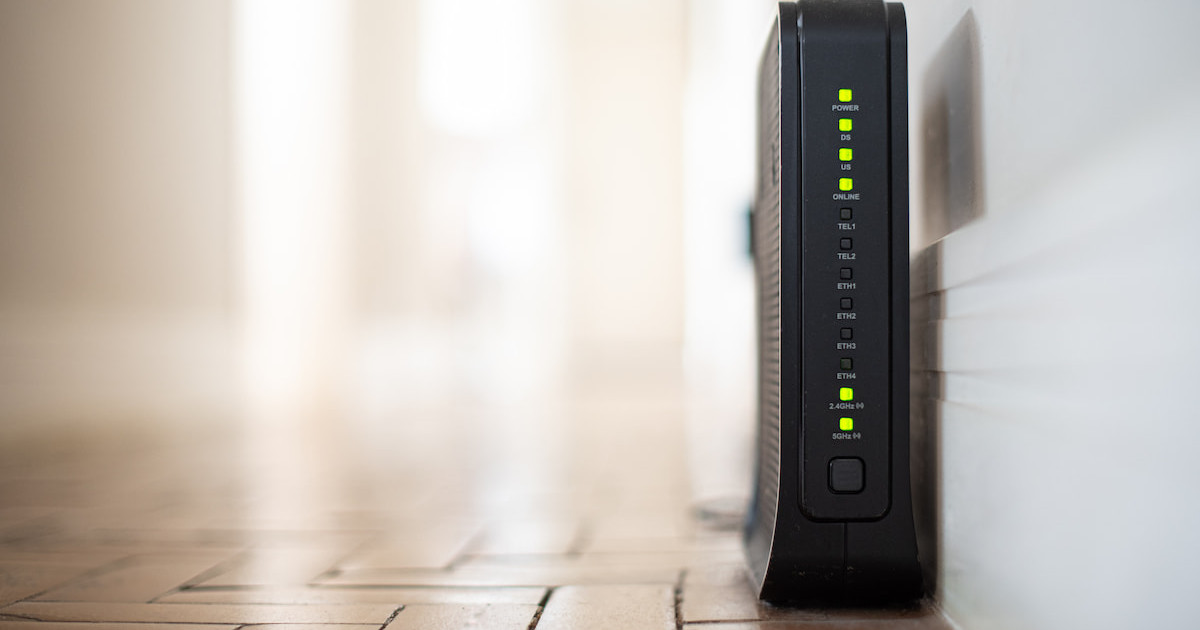Entering Light Speed: Explaining “Li-Fi,” the Internet You Get From a Light Bulb
Jul 23, 2025 | Share
Technology
The quality of your internet depends a lot on the way you get it. Most internet users get fast speeds at home through fiber and cable internet providers, while many others get portable Wi-Fi through the radio waves of cellular networks. But what if you could check your email and post to social media simply by switching on a lamp?
That is the promise of light fidelity, or Li-Fi—a technology that harnesses visible light to get you an internet connection.
Want fast internet?
You can’t get Li-Fi from an internet provider just yet—but you can get fast Wi-Fi
The technology behind so-called “visible light communication” has been around since 2011, when University of Edinburgh professor Harald Hass first unveiled Li-Fi capabilities in a gasp-inducing TED talk. Since then, Li-Fi has become gradually more accessible. The international regulators of IEEE released a boundary-setting Li-Fi standard in July 2023, and companies have been experimenting with Li-Fi home setups, tablets, and other tools outfitted with internet–enabled LED bulbs.
So what makes this novel version of wireless communication so special? And how can you get your hands on an über-cool Li-Fi lava lamp? Read on to explore the bright future of light fidelity.
How does Li-Fi work?
Li-Fi works by beaming light pulses from a specially designed LED bulb. According to Berlin-based Li-Fi developer Fraunhofer HHI, the bulb modulates its brightness—like optical Morse code—allowing it to beam binary data to a receiver. The light flickers at a rate of a hundred million times per second, so the changes in light are imperceptible to the human eye.
You plug a receiver dongle into your computer or other Wi-Fi device. It picks up those light signals and translates them into internet data. The receiver can also send back signals through the light, allowing you to upload data to websites and servers as well as download it.
How strong does a Li-Fi bulb have to be?
According to the experts at LiFi.co, a Li-Fi bulb needs to be constantly switched on in order to transfer data. However, you can dim the bulb significantly and still get internet—it just needs to be bright enough for your receiver to pick up the light modulations encoded with the binary data.
You can also have other lights nearby—such as sunlight coming in from a bedroom window—without scrambling the Li-Fi connection. A Li-Fi dongle is designed to detect fluctuations in the brightness of a light, so it doesn’t pick up on constant light that isn’t fluctuating. But you likely have to make sure that any flickering lights nearby don’t interfere with your connection.
How does Li-Fi compare to fiber-optic internet?
Li-Fi technology uses light differently from the way it’s used in a fiber-optic internet connection. Although both connection types use light, fiber channels photon signals through tiny strands of glass, which are bundled up in cables buried underground.
On the other hand, Li-Fi is a wireless form of internet, using the visible light that beams from a light source to transfer data. That makes it much less stable than fiber internet, but also more portable and easier to access (so long as you have the proper Li-Fi tools).
Sounds cool. So why should I care?
Li-Fi offers a unique way to access high-speed internet at times when other internet connections aren’t available.
The relatively isolated range of LED lighting increases a user’s privacy, making a Li-Fi connection less susceptible to hackers and malware. Visible light gives you a fast and reliable internet connection in areas where radio and cellular networks are limited, making it particularly useful for classrooms, hospitals, and factories.
A Li-Fi connection is also potentially more portable. Infrared is already widely used in remote controls—imagine how handy it would be to have an “internet flashlight” or “internet remote” that you can keep in your backpack to give you quick download speeds whenever you need.
The push towards Li-Fi reflects industry-wide efforts to find new ways to meet the needs of an increasingly connected world. Cellular companies have embraced new technologies like 5G to increase their bandwidth capacities, and Li-Fi shows a lot of potential as well—although it has yet to be used on a wide scale.
Pros and cons of Li-Fi technology
 Pros:
Pros:
- Enhanced privacy protections
- High mobility of Li-Fi devices
- No radio interference with a Li-Fi signal
 Cons:
Cons:
- High prices for Li-Fi products
- Limited range for a Li-Fi connection
- Limited availability of Li-Fi products
Li-Fi vs. Wi-Fi—What’s the difference?
Li-Fi is much different than Wi-Fi, which is the wireless standard that provides internet for countless computers, phones, and other devices today.
To put it briefly, Wi-Fi is a form of wireless internet that works over radio waves—specifically the signals that beam from a device like a home router or mobile hotspot. It’s a lot more widely used, and frankly, a lot more practical. Wi-Fi works over a wider range and it’s always on. That’s different from Li-Fi, which requires that you constantly have the light turned on in order to work properly (although you can dim the lights to a very low level).
| Li-Fi | Wi-Fi | |
|---|---|---|
| Connection source | Visible light | Radio waves |
| Range | Up to 32 feet | Up to 66 feet indoors, max 490 feet outdoors |
| Market availability | Extremely limited | Universally adopted |
| Security and privacy | Highly secure | Secure but some vulnerable |
Still, Li-Fi presents some advantages over Wi-Fi. A Li-Fi LED light doesn’t permeate walls or other obstructions, effectively giving it a safety seal that protects the user’s privacy. It also doesn’t rely on radio waves to operate, so the signal can’t get scrambled from the competing signals of things like walkie talkies, baby monitors, or microwave ovens.
What speeds can you get on Li-Fi?
Li-Fi is capable of hitting internet speeds ranging from 100Mbps to 1Gbps, according to Fraunhofer HHI. Commercial products such as the LiFiMAX Flex can hit guaranteed data rates of 150Mbps download speeds and 140Mbps download speeds.
Those aren’t exactly eye-popping speeds—they’re equivalent to what you can get from a baseline fiber internet plan. Some products advertise faster capabilities, while LiFi.co claims that Li-Fi speeds can potentially surpass 224Gbps.
Pro tip: See if you get light speed
Run our speed test to see if your current Wi-Fi packs a punch as powerful as Li-Fi technology.
Internet speeds by connection type
| Connection type | Download speeds | Upload speeds |
|---|---|---|
| Li-Fi | 100–1,000Mbps | 100–1,000Mbps |
| Fiber | 100–50,000Mbps | 100–50,000Mbps |
| Cable | 25–2,000Mbps | 4–250Mbps |
| 5G home internet | 87–1,000Mbps | 12–75Mbps |
Alright, I’m sold on Li-Fi. How can I get it?
There are only a handful of options to get in on the Li-Fi action right now, but more products may be on the way.
The best way to get Li-Fi at the moment is with the LiFiMAX Flex, a plug-and-play setup that consists of a Li-Fi access point, two photonic antennas, and a USB dongle for you to plug into your laptop or other device. The system supports up to 32 simultaneous users and works on most devices with a type A or C USB port. The only drawback is that it costs $2,190—extremely steep for an internet setup.
Best Li-Fi products
| Product | Price | Features | View product |
|---|---|---|---|
| LiFiMAX Flex | $2,190 |
| Get It |
| LiFiMAX Tab tablet | $599 (or $209 when bundled w/ LiFiMAX Flex) |
| Get It |
Author - Peter Holslin
Peter Holslin has more than a decade of experience working as a writer and freelance journalist. He graduated with a BA in liberal arts and journalism from New York City’s The New School University in 2008 and went on to contribute to publications like Rolling Stone, VICE, BuzzFeed, and countless others. At HighSpeedInternet.com, he focuses on covering 5G, nerding out about frequency bands and virtual RAN, and producing reviews on emerging services like 5G home internet. He also writes about internet providers and packages, hotspots, VPNs, and Wi-Fi troubleshooting.




